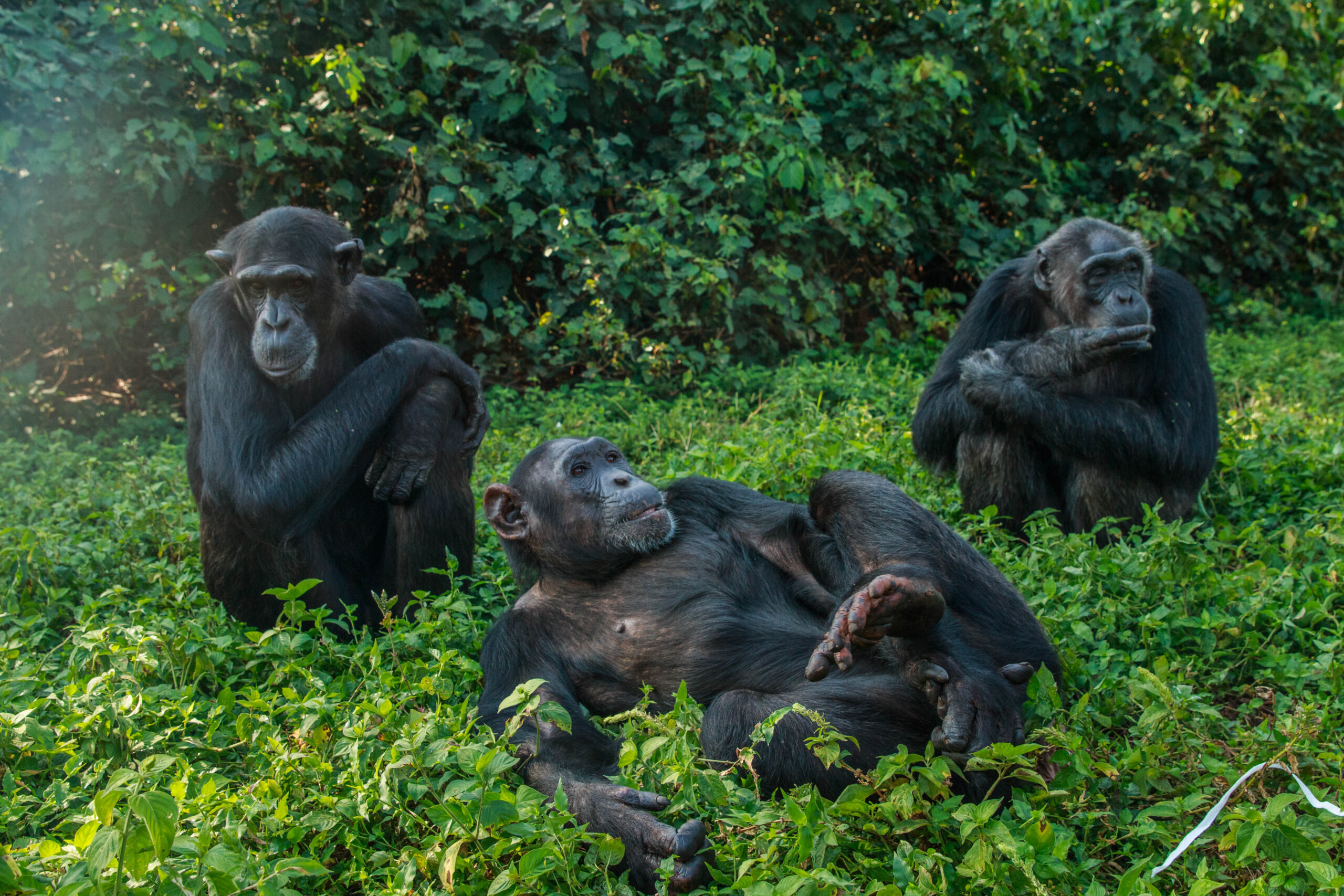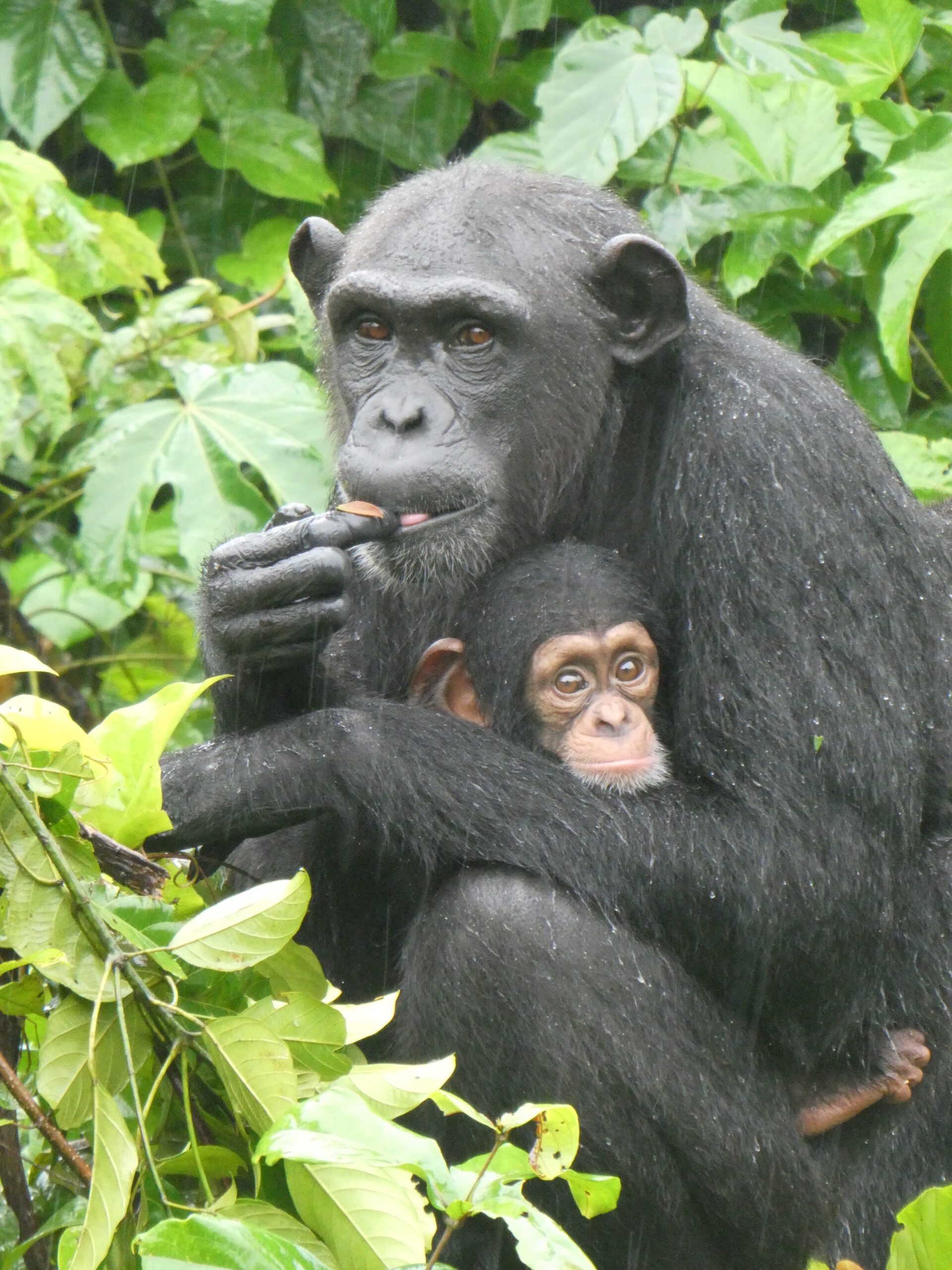Viruses in Sanctuary Chimpanzees Across Africa
New research finds that sanctuary chimpanzees are infected with viruses previously found in wild chimpanzees. Additionally, it suggests that, like in the wild, sanctuaries experience reverse zoonotic respiratory virus transmission.
By: Alexandra J. Reddy
To enhance efforts to rescue and protect African primates – and preserve their native habitat – the Pan African Sanctuary Alliance (PASA) supports research on a variety of topics. PASA encourages our 23-member wildlife centers across Africa to collect critical data about the animals in their care. The research garnered from the Alliance has often proved invaluable for the welfare and conservation of primates. PASA member research generally involves fieldwork which often provides spatial information about the significance of the illegal wild meat trade, the pet trade, and conflicts between humans and animals in various African nations. This information can be used to inform wildlife protection laws and policies by governments.
A very impactful study entitled “Viruses in sanctuary chimpanzees across Africa“ was recently (Nov 3, 2022) published in the American Journal of Primatology (Am J Primatol. 2023;85:e23452). Three PASA member centers contributed to this study including Tacugama Chimpanzee Sanctuary in Sierra Leone, Tchimpounga Chimpanzee Rehabilitation Center in the Republic of Congo and Ngamba Island Chimpanzee Sanctuary, located in Uganda. At each of these sanctuaries, chimpanzees live semi-freely in large forested enclosures. They live in dynamic social groups that mimic the ones they might have in the wild. Comparing wild and sanctuary chimpanzees in these similar groups can provide helpful parallels for researchers. Nearly all of the chimpanzees at these sanctuaries were rescued as infants from the illegal pet and wild meat trade.
The goal of this cutting-edge research was to evaluate whether viruses typically found in humans might in fact infect these chimpanzees. Researchers, conservationists, and sanctuary staff alike have long been curious about how African sanctuary chimpanzees’ virome – the overall collection of viruses that inhabit an organism – differs from that of their wild counterparts. The findings of this study go a long way towards clarifying this topic.

Chimpanzees at Ngamba Island Chimpanzee Sanctuary live in natural forested enclosures and have dynamic social groups. Photo: Ngamba Island Chimpanzee Sanctuary
In order to analyze the samples, researchers used what’s called “metagenomic next-generation sequencing”. Metagenomic NGS (mNGS) is simply running all nucleic acids in a sample, which may contain mixed populations of microorganisms (such as bacteria or viruses) and assigning these to their reference (“parent”) genomes. In this study, mNGS allowed the investigators to identify – for the first time – which viruses are present in blood samples from chimpanzees at these three PASA sanctuaries and in what proportions.
Three important factors were noted in this study. The viral prevalence – or the viruses these chimpanzees are infected with – and the viral load – or the amount of virus in an infected individual’s blood – were determined by mNGS of nearly 70 chimpanzees across these sanctuaries. The study also considered viral richness, which is simply defined as the number of viruses per individual.
It was found that 26 viruses were present in the sanctuary chimpanzees. Significant variations in viral richness and total viral load were observed among the three sanctuary populations. Pegivirus C was the virus that was most common at each sanctuary. However, this virus, as with the vast majority of viruses in the chimp virome, was apathogenic. This means it is not associated with disease.
This study found only one virus that significantly affected chimpanzees: rhinovirus C, found in a 5-year-old male at Tacugama. This was found at the same time that a respiratory illness started to spread.

PASA member centers like Tacugama Chimpanzee Sanctuary rescue and rehabilitate primates left orphaned by illegal wildlife trafficking. Photo: Tacugama Chimpanzee Sanctuary
In short, the viruses they found in these populations are all “normal” chimpanzee viruses and – except for rhinovirus C (which is a respiratory virus) – apathogenic.
This study demonstrates that sanctuary chimpanzees are infected with viruses that are not detrimental to them. Many of these viruses have previously been observed in wild chimpanzees. It also suggests that reverse zoonotic transmission of respiratory viruses occurs in sanctuaries similarly to the wild.
Conservation efforts have historically been hampered by concerns about sanctuary apes being infected with “atypical” pathogens. This study’s findings strongly suggest that prior long-held concerns about chimpanzees regularly being infected with detrimental viruses is likely to have been vastly overestimated. This new information can now aid PASA members in improving animal welfare, and delivering critical care to imperiled primates across Africa, by shedding new light on comparisons between the virome of sanctuary and wild chimpanzees. Finally, the researchers acknowledged that different sample types, such as urine, saliva, or feces, might produce different results. As such, this fact is very likely to spur additional research in the near future!
Do you have expertise in behavioral research or veterinary medicine? You may be able to organize a volunteer trip with the sanctuaries and make a contribution to primate research. To learn more about various opportunities and obtain additional information, please contact PASA via email at info@pasa.org.
